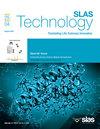可解释的临床诊断通过未开发但优化微调的ConvNeXt模型准确猴痘疾病分类。
IF 3.7
4区 医学
Q3 BIOCHEMICAL RESEARCH METHODS
引用次数: 0
摘要
在过去的几十年里,深度学习(DL)对许多不同的科学领域产生了令人难以置信的影响。特别是在医疗保健领域,深度学习策略能够超越其他现有的图像处理方法。猴痘地方病迅速蔓延到非洲以外的40多个国家,引起了公共卫生领域的严重担忧。鉴于猴痘可能具有与水痘和麻疹相似的症状,早期发现可能很困难。幸运的是,由于人工智能方法的发展,可以利用视觉数据信息及时准确地识别猴痘疾病。许多深度学习驱动技术已经在文献中用于皮肤相关问题,这些技术在一定程度上提供了准确的结果。这些模型依赖于大量的计算资源和时间资源,实时性较差。本研究不是从头开始构建和训练cnn,而是使用迁移学习(TL)技术来微调预训练的网络,特别是利用各种版本的ConvNeXt,通过将最后一层替换为额外的任务特定层。还就计算时间和性能评估和调整了一些预处理和数据增强方法。本研究完成了二分类和多分类的猴痘疾病分类任务。利用Adafactor优化技术对基于tl的ConvNeXtSmall和ConvNeXtBase架构进行微调,在基准的MSLD(二分类)数据集上获得了99.9%的准确率,在MSLD v2.0(多分类)数据集上获得了94%的准确率,证明了所建议框架作为替代现有框架的实用性。该模型通过标准训练测试分割和k-fold交叉验证技术进行评估。此外,还对模型的性能进行了其他几个指标的评估,包括召回率、F1分数、精度和与可解释的人工智能方法相结合的多个统计测试,以更好地解释结果。通过利用迁移学习能力,利用更少的时间消耗和计算效率的网络来解决实时适用性的问题。此外,该研究的可解释的发现将对医疗保健专业人员了解模型的决定性行为和做出明智的临床决策具有很高的价值。本文章由计算机程序翻译,如有差异,请以英文原文为准。
Explainable clinical diagnosis through unexploited yet optimized fine-tuned ConvNeXt Models for accurate monkeypox disease classification
Deep learning (DL) has had an incredible influence on many different scientific areas over the past couple of decades. Particularly in the field of healthcare, DL strategies were able to outclass other existing methodologies in image processing. The rapid expansion of the monkeypox endemic to over 40 nations apart from Africa has prompted serious worries in the realm of public health. Given that monkeypox can have symptoms that are akin to both chickenpox and measles, early detection can be difficult. Fortunately, due to the developments in artificial intelligence approaches, it can be implemented to promptly and accurately identify monkeypox disease using visual data information. Many DL driven techniques have already been exploited in the literature for skin related issues, which have provided accurate results to some extent. These models were dependent on extensive computational and time resources due to which the real-time applicability is difficult. Rather of building and training CNNs from scratch, this study uses transfer learning (TL) technique to fine-tune pre-trained networks, particularly exploiting various versions of ConvNeXt, by substituting last layer with additional task specific ones. A number of pre-processing and data augmentation methods have also been assessed and adjusted with regard to computing time and performance. The proposed study performs the binary and multi class monkeypox disease classification task. Promising accurate results of 99.9 % on the benchmark MSLD (binary class) dataset and 94 % on the MSLD v2.0 (multi-class) dataset is obtained by fine-tuned TL-based ConvNeXtSmall and ConvNeXtBase architecture with Adafactor optimization technique, demonstrating the practicality of the suggested framework as a substitute for the current ones. The proposed model is assessed through both standard train-test split and k-fold cross validation techniques. Furthermore, performance of models is also assessed on several other metrics including recall, F1 score, precision and multiple statistical tests incorporated with explainable AI methods for better interpretability of results. The concerns regarding the real-time applicability are tackled by utilizing the less time consuming and computationally efficient networks through the exploitation of transfer learning capabilities. Moreover, the explainable findings of the proposed study will be highly valuable for the healthcare professionals to understand the decisive behavior of the model and make informed clinical decisions.
求助全文
通过发布文献求助,成功后即可免费获取论文全文。
去求助
来源期刊

SLAS Technology
Computer Science-Computer Science Applications
CiteScore
6.30
自引率
7.40%
发文量
47
审稿时长
106 days
期刊介绍:
SLAS Technology emphasizes scientific and technical advances that enable and improve life sciences research and development; drug-delivery; diagnostics; biomedical and molecular imaging; and personalized and precision medicine. This includes high-throughput and other laboratory automation technologies; micro/nanotechnologies; analytical, separation and quantitative techniques; synthetic chemistry and biology; informatics (data analysis, statistics, bio, genomic and chemoinformatics); and more.
 求助内容:
求助内容: 应助结果提醒方式:
应助结果提醒方式:


